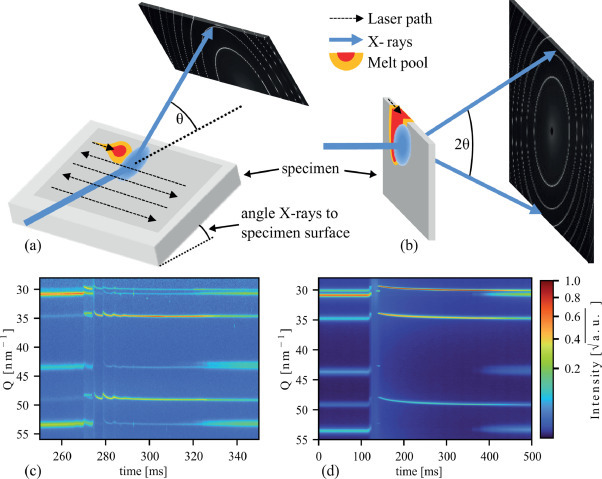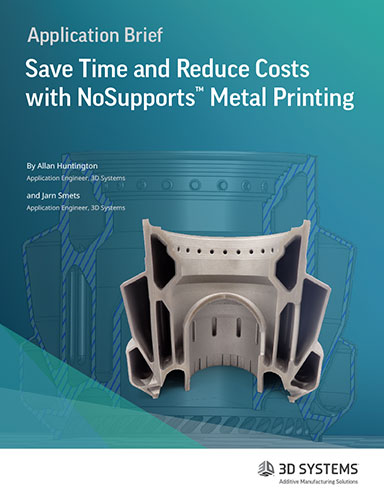Making Metal 3D Printing a Science
Researchers leverage long-standing computational model to help 3D printing professionals predict and control printing characteristics in pursuit of consistent part performance.

Researchers used high-speed X-ray diffraction to identify the crystal structures that form within steel as it is 3D-printed. Image Courtesy of H. König et al. via Creative Common
Latest News
April 5, 2023
Despite a growing market for metal 3D printing for production-grade applications, challenges related to part quality and inconsistencies during the build process remain on-going hurdles to more widespread adoption.
The global metal 3D printing market reached $6.36 billion in 2022 with expectations that it will expand at a compound annual growth rate (CAGR) of 24.2% from 2023 to 2030, according to Grandview Research. Demand for metal 3D printing is being fueled by new applications and production-grade use cases in key industry sectors like automotive, aerospace & defense, and healthcare.
While enthusiasm mounts, there are gaps in understanding what happens within the metal materials during the 3D print process that have impeded more consistent results. Researchers at the National Institute of Standards and Technology (NIST) and the KTH Royal Institute of Technology in Sweden, along with other institutions, have unlocked a computational tool aimed at giving 3D printing professionals more opportunity to predict and control the characteristics of printed parts with the end goal being to improve the technology’s overall consistency for large-scale manufacturing. Their findings were published in Acta Materialia.
The most common form of metal AM is based on melting and subsequent solidification of metal powder layers using a laser energy source. The material rapidly heats up and cools off, which reorders atoms into a crystalline formation and determines critical properties of a finished part, including performance and corrosion resistance. The problem is companies and researchers have struggled with how to steer metal towards particular kinds of crystals to get the desire performance, according to the researchers working on the modeling effort.
To explore how the cooling rates of metal, dictated by laser power and movement, influence crystal structure, the researchers employed a widely-used computational model developed in the 1980s, which was used to describe the solidification of alloys. While the model was trusted to evaluate traditional manufacturing processes, there was concern whether it was valid for evaluating 3D printing in light of the rapid temperature shifts.
The study team turned to X-rays generated by cyclic particle accelerators called synchrotrons to evaluate the high-speed solidification process. The synchrotrons were available at the Argonne National Laboratory’s Advanced Photon Source and the Paul Scherrer Institute’s Swiss Light Source. The team set up AM conditions for hot work tool steel as part of the experiment. As the different crystals emerged from the 3D print process, the samples were probed and images taken; the data collected depicted the push and pull between the two kinds of crystal structure, austenite and delta ferrite—the latter being associated with print parts cracking, the researchers said.
The results will help engineers decide on what cooling rates to select for the early solidification of the printing process, ensuring the crystal structures produce their desired material and meet intended design specifications.
“The model and the experimental data are nicely in agreement,” said Fan Zhang, a co-author of the study and a NIST physicist. “If we have data, we can use it to validate the models. That’s how you accelerate widespread adoption of AM for industrial use.”
Subscribe to our FREE magazine, FREE email newsletters or both!
Latest News
About the Author
Beth Stackpole is a contributing editor to Digital Engineering. Send e-mail about this article to [email protected].
Follow DE




